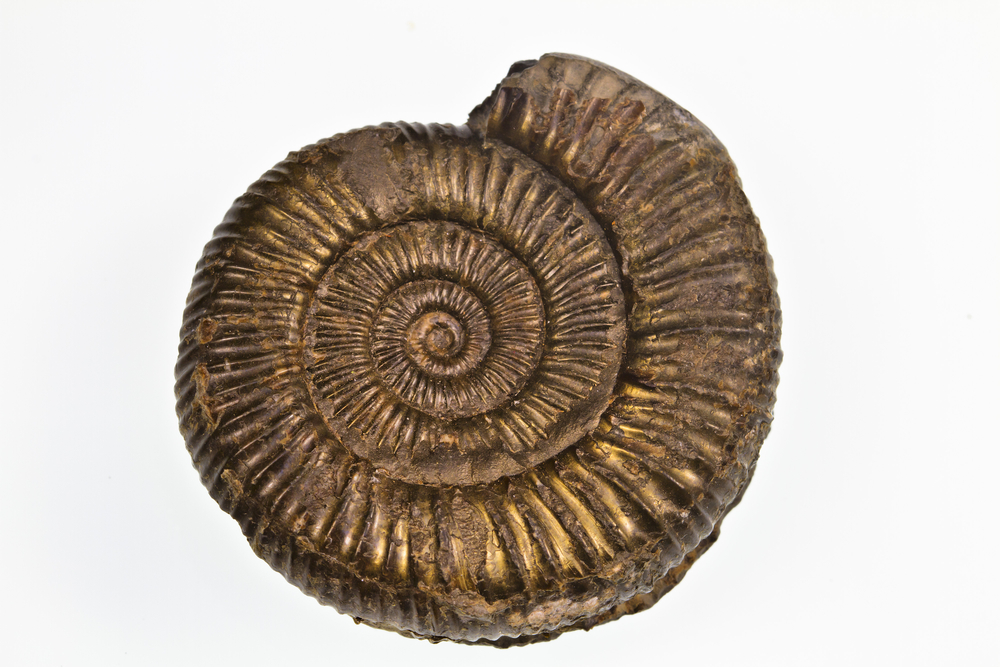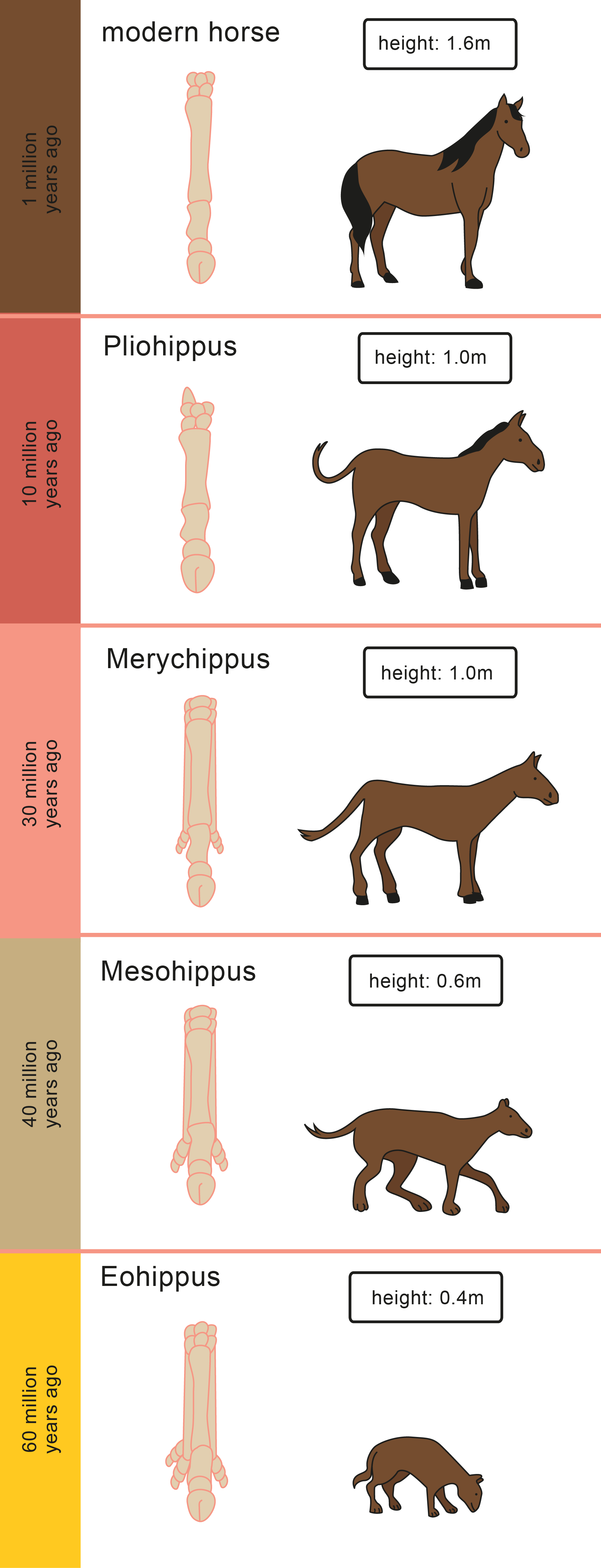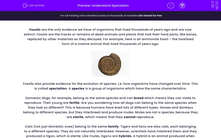Fossils are the only evidence we have of organisms that lived thousands of years ago and are now extinct. Fossils are the traces or remains of dead animals and plants that had their hard parts, like bones, replaced by other materials as they decayed. For example, here is an ammonite fossil - the fossilised form of a marine animal that lived thousands of years ago:

Fossils also provide evidence for the evolution of species, i.e. how organisms have changed over time. This is called speciation. A species is a group of organisms which have the same characteristics.
Domestic dogs, for example, belong to the same species and can breed which means they can mate to reproduce. Their young are fertile. Are you wondering how all dogs can belong to the same species when they look so different? This is because humans have bred lots of different types. Horses and donkeys belong to different species, but they interbreed and produce mules. Mules are not a species, because they are sterile, which means that they cannot reproduce.
Cats (not just domestic ones) belong to the same family. Tigers and lions are also cats, each belonging to a different species. They do not naturally interbreed. However, scientists have interbred them and they produced a tigon, which is sterile. Like mules, tigons are hybrids. A hybrid is an animal produced when two different species interbreed. This is only possible when the species belong to the same family. Lions and tigers share a recent ancestor but have evolved to live in different habitats - lions in open grassland and tigers in the forest.
There are two main theories of evolution, but the one that Charles Darwin developed is the one that was accepted widely and is still believed. However, all theories of evolution have a common explanation behind them and they are related to the organisms being adapted to their environment so they can survive. Environments do change, however. If an organism is to survive, it needs to adapt to the changing environment. In any species, only the fittest individuals survive. This is called natural selection. The fittest survivors have characteristics best suited to their environment. Because they survive, they reproduce and pass their characteristics to the next generation through genes (DNA). If they needed to change to adapt better, over time, many changes could lead to a new species. Therefore, speciation is actually a result of changing conditions like the surrounding environment, a new predator, a disease and so on. This is the theory of evolution according to Charles Darwin.
The diagram below shows how the horse evolved over millions of years to the form we know today. Horses actually had toes to start with, which were gradually replaced by a hoof:

Over 60 million years ago, horses lived in rain forests; they were as small as a dog and had toes. Horses today have hooves and are over 2 m tall. The ground in the rainforest was covered with leaves and was protected by trees, so horses had no problem walking on it. As the environment changed, hooves developed gradually so that horses could run on muddy, open country plains. The height of the horse increased and that was again an adaptation for running in open country.
Let's move on to some questions.








